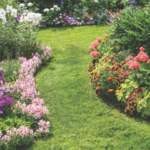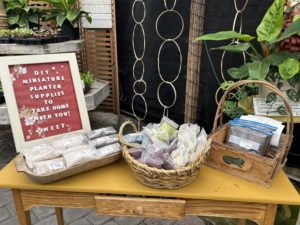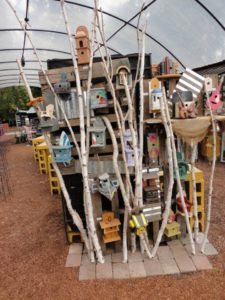
Engaging Plant Purchasers
Plant customers are changing. Years ago, when I first started my graduate work, it was immediately after the Great Recession, and horticulture customers indicated that plants were luxury goods. Given the economic environment, this is not surprising.
Customers, however, are now viewing plants as experience goods where value is obtained through interacting and engagement. Customers have also changed and are now valuing experiences over possessions. Together, these trends demonstrate the added value plants innately provide customers and help define part of the bump in sales observed during the pandemic. Given that plants engage consumers and people value experiences, in this article I am going to focus on different means of engaging your customers through online and in-person channels.
Online Platforms: During the pandemic, 16 to 18 million new people started gardening as a means of enriching their daily lives through interacting with plants and beautifying their environment.
Many of the new gardeners sought gardening information online. Figure 1 shows U.S. customers’ Google searches for gardening information from March 2017 to January 2022, with a substantial bump in 2020 and a smaller bump in 2021.
Figure 1. Google Trends of “Garden” Searches in the U.S. from March 2017 to January 2022.
New (and existing) customers are relying on online content more than ever before, meaning information needs to be relevant, up to date, and available when customers start seeking it (i.e., February).
Beyond Google, people are still seeking information on social media platforms, and electronic word of mouth (eWOM) is one of the most efficient means of reaching core customer groups and promoting a firm and the products offered. Beyond the promotional aspect of eWOM, it is also a way to engage customers through encouraging sharing of visually attractive plant displays, photos and videos.
In-person or Online Plant Purchases: Online purchasing of plants increased during the pandemic. Expenditures on plants and landscape items increased by 3.4 to 4.6% from January to July 2020, relative to the same time period in 2019, which equates to approximately $306.4 million in additional sales in 2020.
Interestingly, people who ordered plants online but used curbside pickup were more likely to revert to in-store shopping after the pandemic. Some factors that may have driven this trend are living close enough to the retailers to drive and pick up the plants, and enjoyment of the on-site shopping experience.
Conversely, people who ordered plants online and had them delivered were less likely to revert to in-store shopping. These results may be due to increased familiarity and trust with the online experience and online stores delivering high-quality plants without damage. Additionally, the online order and delivery option opens opportunities for access to a wider variety of plant selections and improved efficiency for individuals who do not live near garden centers or have limited free time to go plant shopping.
Younger customer groups are also more receptive to purchasing plants online. E-commerce is likely to become more popular among customer groups in the future. Some considerations if your firm is moving toward e-commerce include professional website development and photos, recent reviews, search engine optimization, easy checkout and delivery or pickup options, and quality guarantees. Although in-store plant purchasing will always be a popular option, online shopping has come into our industry, and providing a professional online presence is a worthy investment.
Point-of-Sale Information: Point-of-sale (POS) information can be online or in-person but provides relevant information when customers are selecting products to purchase. POS includes signage, plant tags, floor decals, banners, displays and so forth.
When people purchase plants, they take several predictable steps. First, they visually skim the area/plants to make sure the plants meet a basic need (e.g., a specific color, sun/shade tolerant, etc.). Then, they will pick up the plant for a closer visual inspection for quality indicators (e.g., free of damage, insects, disease). Lastly, they look for additional information.
This last stage of the decision process is where the POS information comes into play and can sway customers toward (or away from) specific plants. As familiarity with plants increases, the decision process speeds up and having visually salient POS information can aid consumers’ purchasing process.
With nearly 18 million new customers, there is a huge opportunity to educate, engage and aid them in selecting a plant that will meet their needs. Eco-friendly plants are very popular among various customer groups. If the plant is native, attracts pollinators, aids biodiversity, attracts birds, improves personal health and well-being, or provides other benefits, signs are a good way to communicate this to interested people.
Every person who walks into a garden center is interested in buying plants, but not every person is aware of the value-added benefits those plants provide. Part of our job as an industry is to enlighten the customer about those benefits.
For an enhanced reading experience, view this article in our digital edition.



















 Videos
Videos





